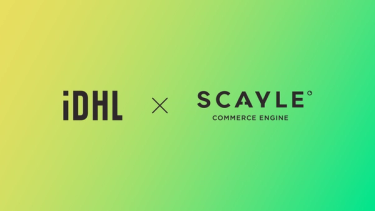Insight18 min read
The importance of website accessibility
Tue Dec 01 2020 | Marketing Team

- Insight
- Web & eCommerce
- Design, UX & UI
Tags
Accessibility started to be considered in web projects in the early 2000s. However, the topic has only become more prevalent in the world of web design and development in recent years in line with our desire to better understand and empathise with the needs of others.
While businesses haven’t necessarily been aiming to design and develop websites that intentionally exclude people, there is a notable lack of awareness of what could exclude someone while browsing a site. As a result, accessibility has been lower on the list of website priorities and this presents a problem, both for your business and your audience.
“Accessibility is a problem that we have because we don’t actively try to make websites accessible unless it meets a budget. Yes, businesses have different user groups, different target audiences and different personas. But fundamentally, we should build websites with accessibility in mind because it’s ultimately beneficial for the business and every person using it.” – Lew Slade, Design Team Lead
So why wouldn’t you make your website accessible to all? In this blog, we discuss what accessibility standards are, how they can be considered in website projects and why building websites with accessibility in mind is quite simply, the right thing to do.
What are website accessibility standards?
The UK and US governments use a set of guidelines, known as the Web Content Accessibility Guidelines (WCAG), featuring accessibility criteria that businesses need to meet on their website in order to consider all users. The most recent version, WCAG 2.1, was released in 2018 and is divided into four principles:
- Perceivable: Content and user-facing components must be presentable to the users in a way they can perceive and understand it.
- Operable: User facing components and navigation must be operable meaning the interface cannot require interaction that a user cannot perform.
- Understandable: The operation of the user interface must be understandable to all users.
- Robust: Content must be robust enough that it can be interpreted reliably by a variety of assistive technologies. Content should also remain accessibly as technologies evolve.
The WCAG outlines specifications for the different levels of accessibility – A, AA and AAA (single A, double A and triple A). The higher the level, the harder it is to meet. Let’s consider these levels in terms of onsite colour contrast:
- For single A, there is no specific criteria to meet regarding colour contrast, however, there is criteria on the use of colour to convey information. For example, colour shouldn’t be used as the only visual means of conveying information or indicating an action as some users may be unable to distinguish between different colours. Therefore, text cues are required to support visual differences.
- To meet double A compliance, a visual level of contrast between colours is required so that someone who is colour blind, for example, can still enjoy the onsite experience in the same way as someone with 20/20 vision. Businesses must also aim to meet specified contrast levels of at least 4:5:1.
- To meet triple A standards, the highest colour contrast levels are required of at least 7:1.
The same can be said for typography. If you’re a business who wants to meet triple A standards, large text is a must-have to make it as easy as possible for the user to read. However, this is where conflicts can arise with branding and design. For example, a high-end brand may desire a luxury, minimal feel to their website which is hard to achieve from a double A or triple A perspective.
Building the case for website accessibility
Making your website usable for everyone should be a top priority. So why does accessibility often end up taking a back seat in web projects?
For starters, it’s hard for businesses to measure the return on investment of accessibility which often makes it one of the first considerations to be cut over other priorities. Imagine you have a slow site, and you implement improvements that make it 20 percent faster which, in turn, increases your conversion rate. It’s easy to measure this ROI and justify the cost of making these improvements.
On the other hand, if users are bouncing off your site, it highlights that they can’t find what they were looking for. However, you don’t necessarily know if that user left your site due to an accessibility requirement not being met. As a result, many businesses struggle to justify spending budget on ensuring their site is accessible.
But have you thought about the business you could be losing by not making your site accessible? Let’s take a look at the numbers. In the UK…
- There are approximately 14.1 million disabled people.
- Approximately 1.5 million people have a learning disability with up to 350,000 of these being severe.
- There are around 3 million colour blind individuals – that’s 4.5 percent of the entire population!
- It’s estimated that nearly six million people are living with site-threatening eye conditions.
Not considering accessibility on your website is potentially excluding all these people. Not only is this morally wrong, but it could also be costing you business. In fact, the consumer spending power of the disabled population has been estimated at £274 billion per year in the UK. That’s an awful lot of missed business considering 71 percent of those with a disability will leave a site they do not find accessible.
Ensuring your website meets the WCAG guidelines is a must for businesses today. Why? Because not being compliant could lead to lost visitors, brand damage and legal risks.
Legal
One of the reasons website accessibility is so important is due to legal requirements and the risk of being sued. There are regulations in place that force certain business entities to meet specific criteria. For example, a government department such as HMRC or a public sector entity that receives government funding must meet double A criteria or they risk being fined.
However, accessibility legislation varies from country to country with different regions having different standards. Some countries enforce accessibility and make it mandatory for any business with a website in that country to comply to their standards.
In other places such as America, there is no written legislation that states businesses must meet specific accessibility criteria on their website. However, there is legislation in place that states you can’t discriminate against disabled people. Therefore, if your website is not accessible, this could be classed as discrimination which is why many businesses receive discrimination lawsuits.
It’s very easy for a business to get caught out when it comes to accessibility. Some entities even search for a specific URL using Google’s Lighthouse tool to run accessibility checks. This tool flags any issues which can then be used as the foundations for a lawsuit.
Beyoncé: Accessibility lawsuit
In January 2019, Beyoncé’s company, Parkwood Entertainment, was sued over website accessibility. The lawsuit, which was filed by a blind woman in New York, alleged that the website violated the Americans with Disabilities Act (ADA) and did not accommodate people with significant visual impairments.
Web accessibility requires onsite photos to be coded with alt-text that describe the image. This text is included so that screen readers can play the text to the visually impaired user. However, on Beyoncé’s site, the alt-tags lacked relevant descriptions making it inoperable for a visually impaired individual to browse the website. The complaint also covered further issues including the lack of an accessible menu and the inability to navigate using a keyboard instead of a mouse.
A simple consideration of creating sensible image alt-tags when building the website could have prevented a lawsuit like this from taking place. As more countries begin to enforce website accessibility standards, others will naturally follow suit over time making it more important than ever for businesses to consider how accessible their site is.
Google updates
Google’s Page Experience update is set to launch in May 2021. A major change that will impact every business, Page Experience takes UX into consideration when ranking in search results. With accessibility a key factor of the update, business’ organic rankings and online visibility could be impacted if their website is deemed inaccessible or difficult to use.
In Google’s never-ending mission to serve the best results possible to the user, it’s no wonder onsite user experience and accessibility is finally becoming a significant factor of ranking websites. With better, more accessible website results on the SERPs, Google is making an effort to not exclude those with an ailment by serving them sites that are accessible. But what does this mean for your website?
For those who didn’t consider accessibility during their website build, changes may need to be made your site to prevent you from being penalised in the SERPs. On the other hand, if you’re planning on starting a website project, it has become all the more important to allow time and budget for accessibility considerations.
Web design and accessibility
Website accessibility needs to start with the design and user experience. There are design elements that are key to ensuring the visual features of your site are accessible. Colour contrast is often the first point of call in relation to accessibility when designing a website. Fortunately, there are many design tools and even Chrome plugins that can be used during the design process to help ensure your website is accessible. A web design agency should have the expertise and tools to flag accessibility issues so changes can be made that support a positive user experience for every person.
We use a tool that enables us to compare a brand’s colour palette by producing a comparison grid. This grid compares the different colours used on the website such as the background, text, links and button colours. An example such as black on white or white on black is easily readable but using a combination of green and white may not meet the minimum AA standard. Being notified of these details during the design process allows us to alter colour combinations to ensure the website meets the desired accessibility standards.
While UX and accessibility are different things, they are naturally interlinked. If someone has trouble accessing your site, this will affect the user experience. In many ways, a poor UX leads to poor accessibility. If you don’t consider accessibility during the design stage of a new website build, you will end up with a website that’s enjoyable to interact with for the majority, but hard to operate for those with a disability.
Brand impact
It’s important to consider the impacts of not having an accessible site. As web accessibility becomes a pressing element for businesses to consider, negative perceptions around your brand could occur if it’s found your site isn’t accessible. This could lead to bad PR, complaints and damage between your brand and audience.
When considering accessibility on your site, remember that an accessible site doesn’t have to be an ugly site. Many make the mistake of believing an accessible website can’t have imagery, graphics, colours and stylish branding. Today’s browsers and tools give you the ability to make your site accessible without sacrificing your brand image. Between typography options, a vast variety of colour palettes, tone of voice and other branding aspects, a skilled designer will be capable of translating your brand online in an accessible way.
Take the UK government website for example which must be accessible for all. While it might not be the most luxurious website, it has effectively achieved accessibility and functionality in a pleasant way.
Web development and accessibility
The majority of accessibility considerations are accounted for during the design stage. Meeting single A requirements is relatively easy and involves considerations such as having relevant alt tags, ensuring links have colour contrast and that buttons and interactive elements are usable by all.
However, if you want to comply to double A or triple A standards, this is when web development becomes more integral to making your site accessible. At this point, you need to consider individuals that use screen readers or other assistive technologies to navigate the website. Site navigation needs to be logical and work seamlessly to allow users to access different areas of the site with ease. Messy code should also be simplified during development to make it as easy as possible for assistive technology to tab through the site.
ARIA
Accessible Rich Internet Applications (ARIA) are a set of attributes considered during the development stage of an accessible website build. These attributes can be added to HTML elements to provide information on how the site works, making web content and applications accessible to those who use assistive technologies. When accessibility issues cannot be managed with native HTML, ARIA helps to bridge the gap to solve these problems.
For example, if an element of your site is purely visual and has no other purpose to the screen reader, this needs to be translated to the screen reader, so it knows not to read or check that element. Another common example is when multiple pieces of text are continuously looped on a slider. In this case, you wouldn’t want the screen reader to read the same bit of text over and over again when it comes back around.
Testing accessibility
As website accessibility evolves, tools have been created to make it easier to test and check accessibility levels. These types of tools can be used in a variety of ways such as:
- To check colour contrast ratios and flag where they aren’t good enough to pass accessibility standards.
- To check whether relevant alt tags have been used across the website.
- To check the visual aspects of a site based on a vision deficiency such as blurred sight or colour blindness.
An additional method to understand how accessible your site really is, is to test it out first-hand. While these tools can help us identify issues, we would always advise manually testing your website’s accessibility as certain criteria cannot be picked up by testing tools.
How could an agency help you with website accessibility?
The most important element of website accessibility is ensuring that the onsite experience is consistent and accessible to every single user, regardless of their disability or ailment. Website accessibility is an issue that, eventually, nobody will be able to ignore. Not only does it have notable commercial benefits for your business, but it also improves usability for every user and ensures you’re not excluding a percentage of your audience.
As website accessibility evolves, it’s important to keep up with today’s standards. There are accessibility elements now that wouldn’t have been taken into consideration a few years ago and this will continue to progress as digital experiences develop.
As a web development agency with over 20 years of experience, we have worked alongside many businesses to conduct extensive user research and testing, building websites that accommodate the needs of every user. As advocates of website accessibility, we believe these considerations should be at the forefront of every web project and we aim to cover single A as a standard.
However, how accessible we can make a site heavily depends on project timescales, deliverables and budget. A shift in mindset is required to ensure that accessibility is made a priority, not an afterthought. It’s significantly more difficult to retroactively make a website accessible if it hasn’t been considered from the start. In many cases, it can mean layouts, design features and even branding needs altering in order to achieve a standard of accessibility.
If you want to discuss accessibility in more detail or need advice on how to make your website more accessible, please don’t hesitate to get in touch with our team.


